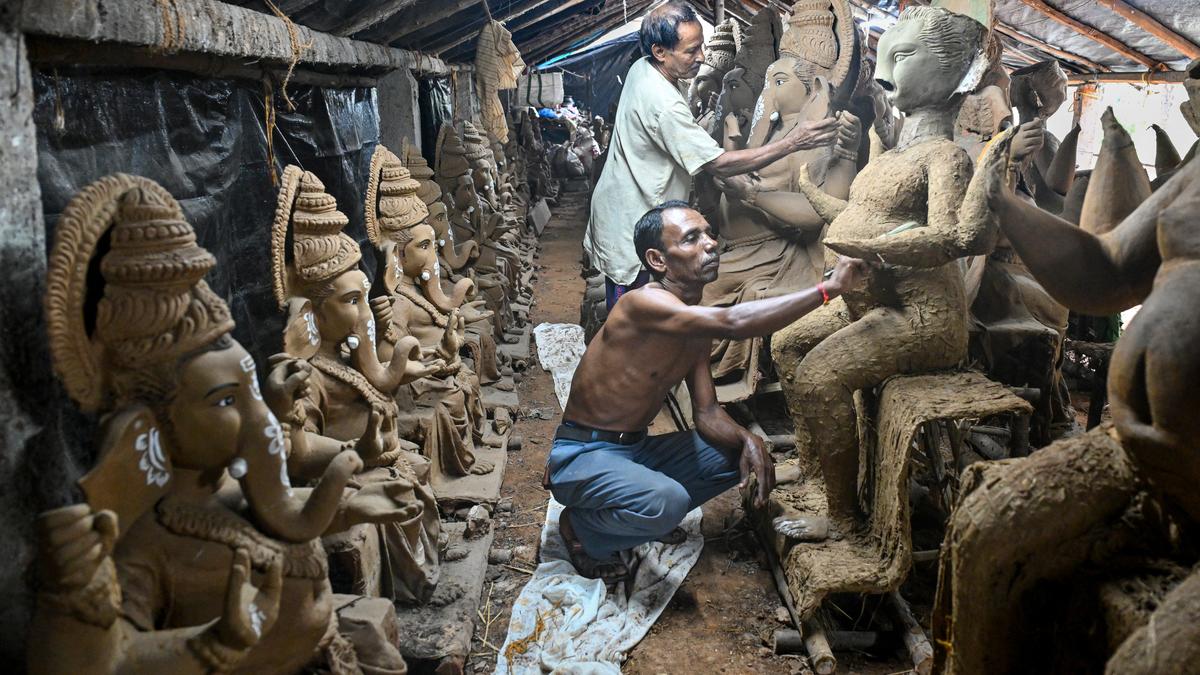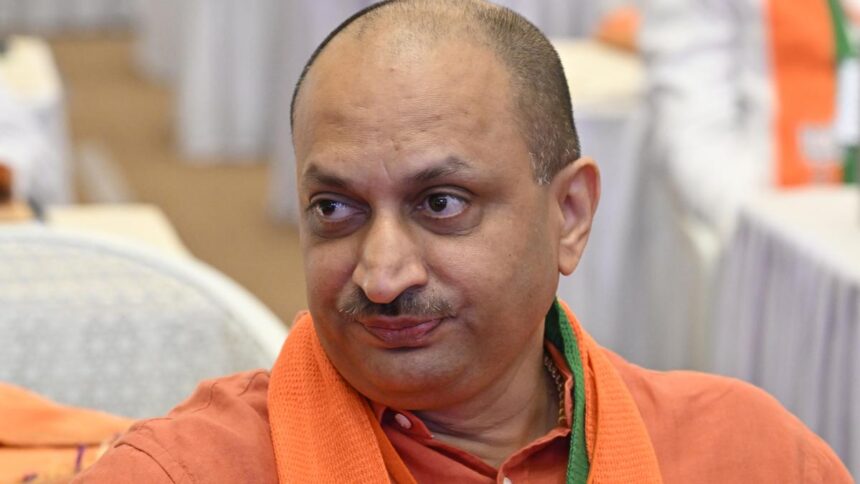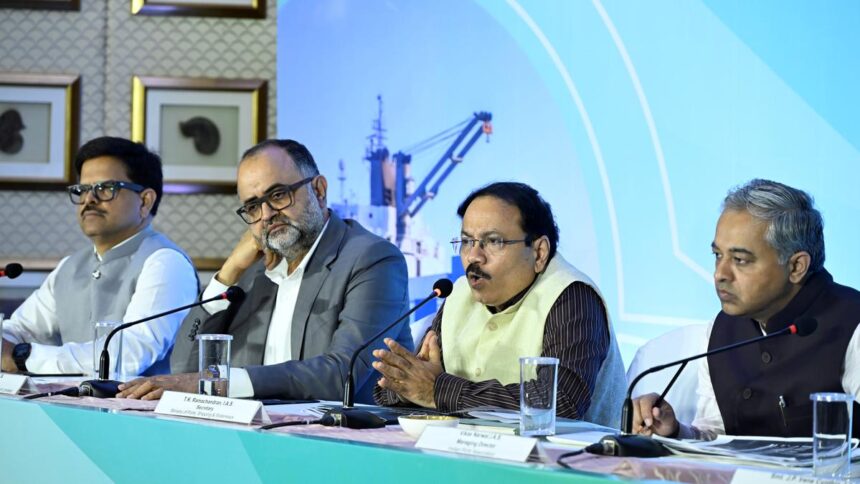Stepping into Sankalpa Art Village in Pedagadi, a quiet locality about 20 kilometres from Visakhapatnam, the air feels heavy with the scent of wet earth. There is a subdued chatter of leaves in the breeze and the measured rhythm of hands shaping something slowly and deliberately. In the shade of a thatched-roofed workshop, three artisans from Kantai village in West Bengal work silently, bent over their craft with the quiet dedication of a prayer. Here, Ganesh Chaturthi is being reimagined, rooted in the earth.
This is their second year at Sankalpa. Saptaranjan Giri, a skilled idol-maker whose family has been in the craft for generations, begins by tying bundles of dry grass to wooden frames. This structure will serve as the skeleton of the idols. With patience, he applies layers of river clay, slowly coaxing out the familiar form of the deity with a care that is both methodical and personal.
A short distance away, Shashanka Bera mixes activated charcoal with water. Using a fine brush, he carefully paints the eyes of one of the idols, giving it a gaze that is arresting in its simplicity. There are no bright pigments here, no glittering decorations. Beside him, Ram Giri works on preparing the colour white using rice flour mixed with just enough water to reach the right consistency. It is this mixture that will be used to define the contours of the idol’s face and torso.
“We do not paint the idols in Visakhapatnam the way we do elsewhere,” Saptaranjan explains without pausing from his work. “In Hyderabad and Rourkela, where we have been working for over a decade, the requests are for bright, glossy idols. Here, the idols look closer to how they traditionally used to be. Just clay, shape, with only some definition around the eyes and ornaments. If a customer wants some detail highlighted, we use turmeric to create a soft yellow tint.”
The workshop holds rows of idols in two sizes — three and five feet in height — lined up for drying in the humid coastal air. Each idol, unadorned and quiet in its presence, reflects a gradual shift in how festivals are observed. Unlike the plaster of Paris idols that flood the markets every year with synthetic paints and artificial embellishments, the idols at Sankalpa Art Village are made entirely from natural materials.
It is this return to a slower, more rooted approach that the creative head of Sankalp Art Village, Jameelya Akula, is working to foster. “This year, we are making 70 idols and are taking pre-orders,” she says.
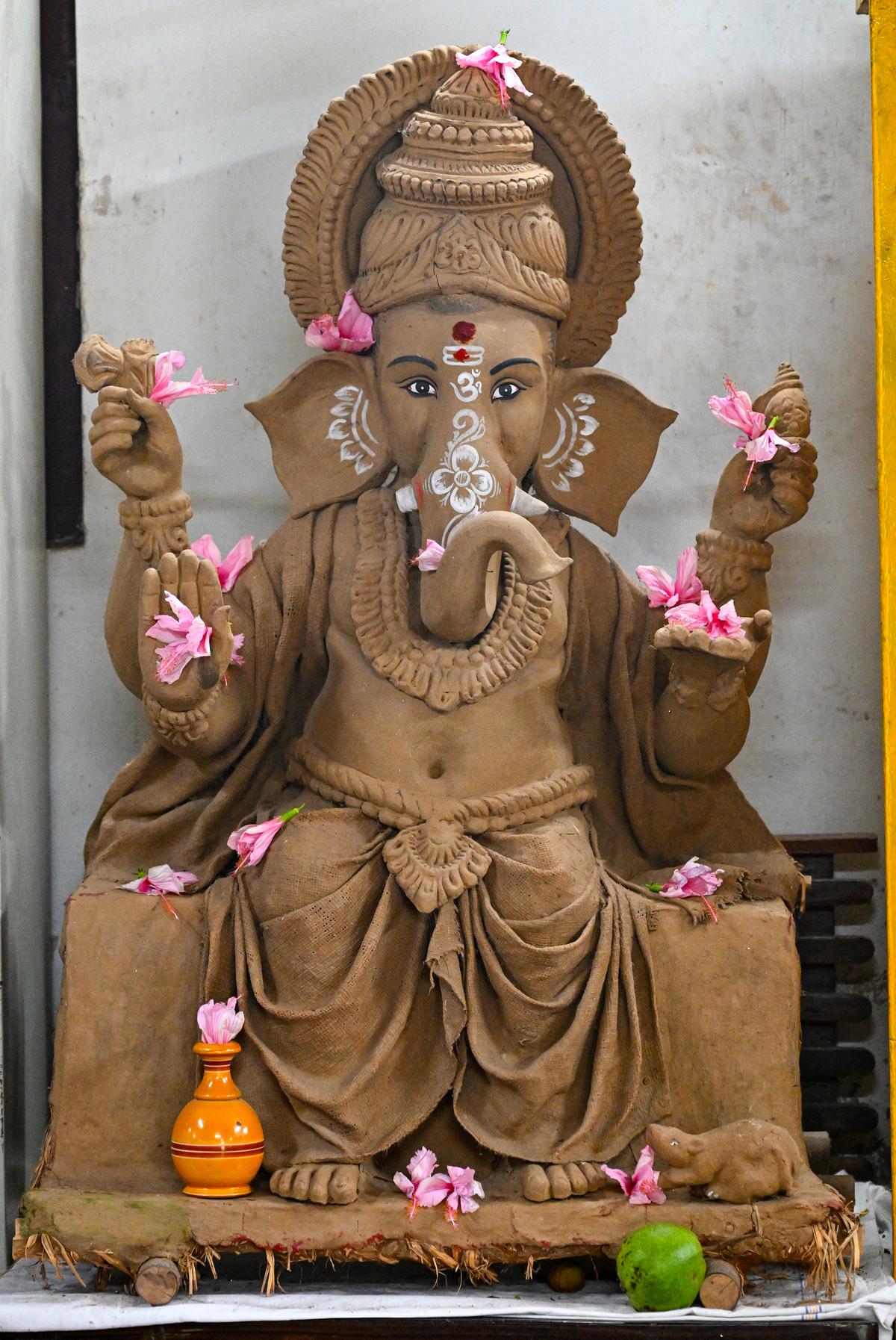
Idol makers from West Bengal making Ganesha idols with clay at a makeshift workshop at Sankalpa Art Village in Pedagadi near Visakhapatnam.
| Photo Credit:
KR Deepak
The idols are made to dissolve quickly and safely in water, leaving no residue and causing no harm to marine life, an important consideration for a coastal city like Visakhapatnam that has seen the devastating effects of water pollution during post-immersion clean-up drives.
“We wanted to go beyond just selling an idol. Festivals were not always about consumption and plastic. They were about materials people found around them, about their farms, their weavers, their rivers. That is the connection we want to rebuild,” Jameelya adds.
In keeping with this approach, each Ganesh idol being made at Sankalpa this year is accompanied by a carefully assembled ‘sustainable platter’. This includes a khadi dhoti woven at Sankalpa’s unit, a packet of native rice variety, organically processed jaggery and a palm-leaf umbrella for the idol handcrafted by local artisans. Each element in this platter reflects a small ecosystem of skills and livelihoods, often overlooked in the urban festive market.
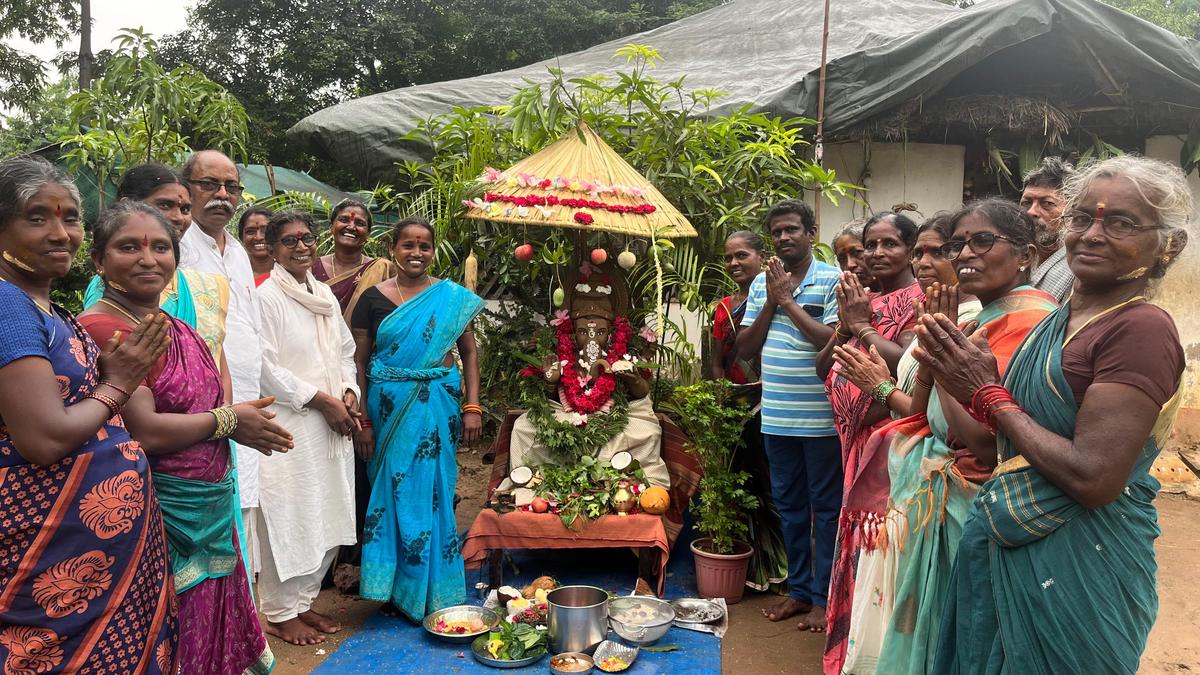
A traditional celebration of Ganesh Chaturthi at Sankalpa Art Village in Visakhapatnam.
| Photo Credit:
SPECIAL ARRANGEMENT
“The palm umbrellas are made by artisans nearby, some of whom have nearly given up their craft. The jaggery and rice come from small farmers who cultivate without chemical fertilisers. The khadi is handwoven,” Jameelya says. “This was not created to market a product. It is meant to remind people what was always there.”
This year, Jameelya also plans to hold workshops in the weeks leading up to the festival. These will introduce children and adults to the making of ‘seed Ganeshas’, small clay idols embedded with seeds. After immersion in a small pot or garden, these idols can germinate. “The idol should not just disappear. It should continue. That was always the idea behind immersion in water that returned to fields or wells. The clay nourished the earth again,” says Jameelya.
At the workshop, the three artisans continue their work with minimal interruptions. The idols, even in their unfinished form, carry a clarity of purpose. There is nothing elaborate about them, but the appeal lies in their raw form. In their natural finish, they invite the viewer to reconsider what celebration means. Perhaps less about grandeur and more about memory, soil and the act of shaping something by hand.
(For orders for clay Ganesha idols, contact 7830904646).
Published – July 23, 2025 03:56 pm IST






